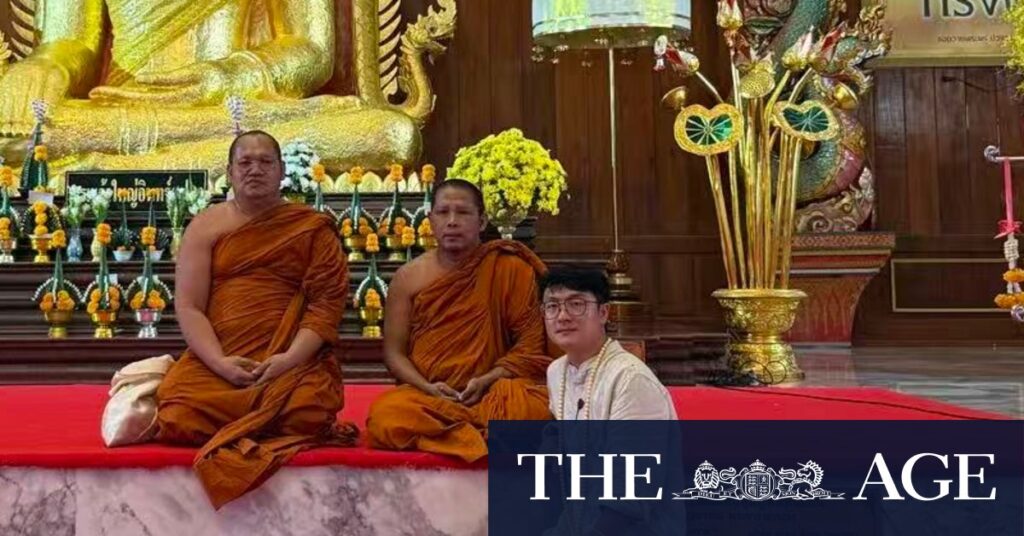
In a Buddhist temple on the border of northeastern Thailand, 28-year-old Chinese national Icey Li found his morning meditation abruptly interrupted. His phone buzzed with urgency: his migration agent was on the line, urging him to catch the next flight back to the United States. The reason? A new executive order signed by US President Donald Trump, imposing a hefty $100,000 fee on H-1B visa applicants, was set to take effect within 24 hours.
The order mandates that US-based companies sponsoring skilled workers must pay this fee, or face restrictions at the border for visa holders attempting to enter the US. For Li, who had recently secured an H-1B visa for a job in Los Angeles’s film industry, the news was a shock. “After being in America for 10 years, this was the first time I felt like I couldn’t go back,” he said, as he scrambled to arrange his return from a village 650 kilometers from Bangkok.
Immediate Fallout and Global Panic
The executive order unleashed a wave of panic among H-1B visa holders and their employers both in the US and abroad. Many, like Li, rushed to secure last-minute flights back to the US, incurring significant costs. Others canceled their outbound travel plans, fearing they would be barred from re-entry.
Social media was flooded with footage of distressed passengers, such as Indian travelers receiving the news while boarding an Emirates flight from San Francisco to Dubai. The captain’s voice, urging calm and offering disembarkation for those reconsidering their journey, underscored the chaos.
Clarifications and Continued Confusion
By Saturday, the White House issued clarifications: the $100,000 fee was a one-time charge for new applicants, not renewals or current holders, and those outside the country would not be affected upon re-entry. However, this did little to alleviate the anxiety felt by many.
“I found my body couldn’t stop shaking,” said David Yang, a 31-year-old Chinese engineer who had to cut short a business trip in Shanghai. Despite booking an immediate flight back to San Francisco, Yang remained uneasy. “The new policy creates a lot of uncertainty about my identity – being safe this time doesn’t mean being safe next time,” he remarked.
Impact on the Tech Sector and International Relations
The H-1B visa program, designed to allow US companies to hire highly specialized foreign workers, is a cornerstone for many tech giants. Companies like Amazon, Google, Microsoft, Apple, and Meta rely heavily on this program to bring in talent. According to Capital Economics, there are about 700,000 H-1B visa holders in the US, with another half a million dependents.
Indian IT firms, such as Infosys and Tata Consultancy, are also significant beneficiaries, with Indian nationals securing 71% of the visas in the 2024 lottery. The Trump administration’s move has strained US-India relations further, compounded by recent tariffs on Indian exports.
“That’s the point of immigration – hire Americans and make sure the people coming in are the top, top people,” said US Commerce Secretary Howard Lutnick, adding to the confusion by initially stating the fee would apply annually for both renewals and new visas.
China’s Strategic Response
Meanwhile, China sees an opportunity in the US’s tightened immigration policies. In October, China plans to introduce a new K visa to attract young overseas science and tech workers. A Chinese Foreign Ministry spokesperson emphasized, “China welcomes outstanding talent from all industries and fields to come to China and settle down there, jointly promoting the continuous progress of human society and achieving personal career development.”
This development highlights the shifting global landscape of talent acquisition, with countries like China positioning themselves as attractive alternatives for skilled workers.
Looking Ahead
The Trump administration’s latest visa policy underscores its broader stance on immigration, viewing it as a threat to American jobs. However, the implications for the tech sector and international relations are profound. As the world watches, skilled workers and their employers must navigate this new terrain, balancing immediate needs with long-term strategies.
As the dust settles, the global community awaits further developments, with many questioning how these changes will shape the future of international talent mobility and economic collaboration.





